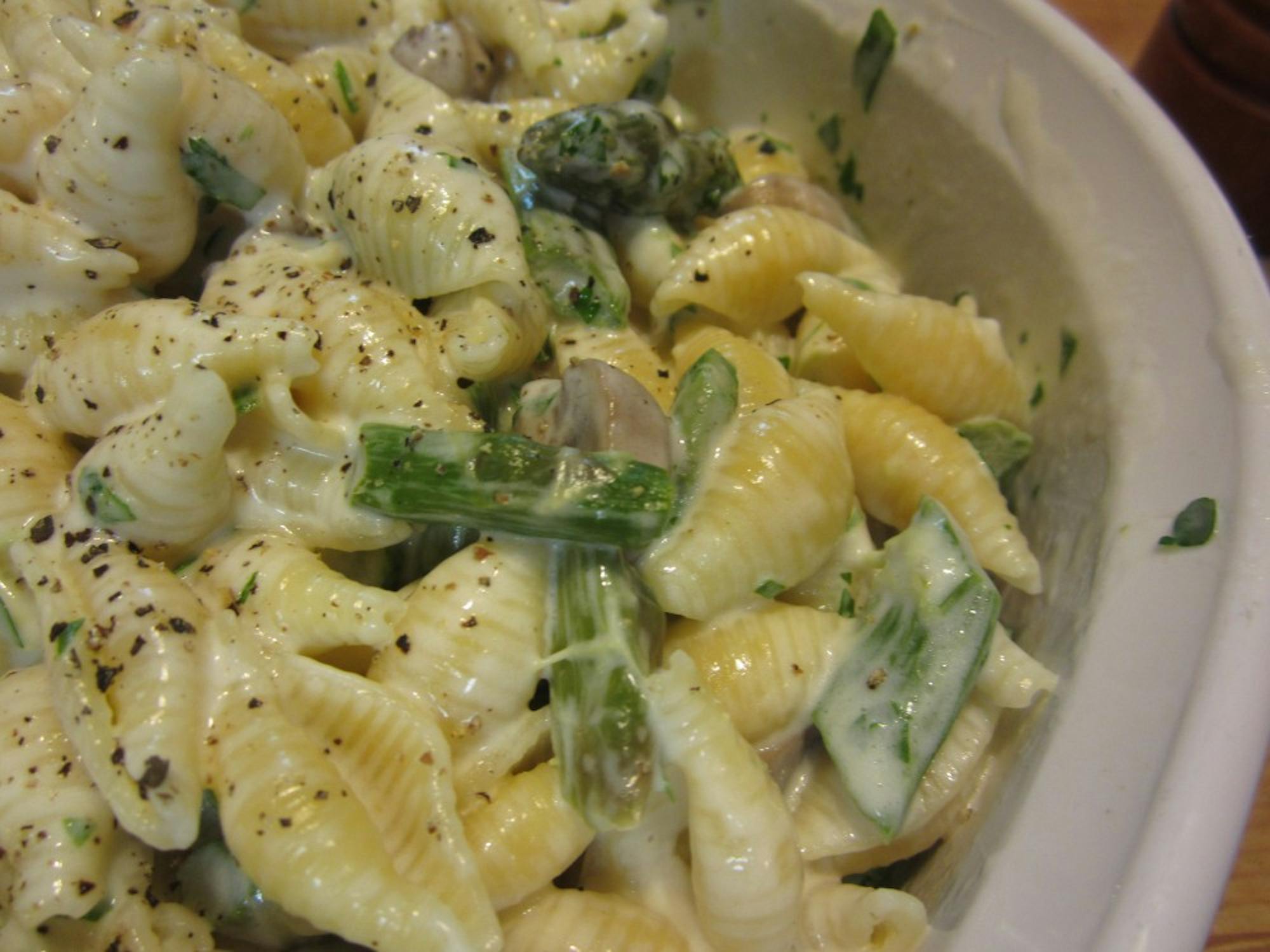Since this is my last column, I have thought a lot about what to write. I wanted to do something special. Something that was joyous, that celebrated the end of the year and the end of my college career. I was thinking about layer cakes, or something that requires a blowtorch. What changed my mind was the quiet arrival of the first asparagus.
My parents have spoiled me with fresh food my entire life. Much of it they grow themselves, from potatoes and carrots to wax beans and tomatoes. Asparagus is the first fresh food of the year, and the first real sign that the warm weather is on its way.
At first, there are only a few tiny spears shooting up, each about the size of my thumb. Then, more and more pop out of the ground, until it’s impossible to eat them all without having asparagus for breakfast, lunch, and dinner.
Now is the very beginning of asparagus season. The first sign was three thick, short stalks of asparagus nestled together in a bowl, each cap a neat spiral pattern. These were too new and too fresh to resist. I ate them raw. There may have even been a few specks of dirt on them that I didn’t wash off. I know that most people don’t eat raw asparagus – and I get it. It’s often tough. The taller and older asparagus gets, the stringier it can be. This means that the asparagus available in the grocery stores might be in season – but it’s not nearly as fresh as the asparagus launching itself out of the ground behind my parent’s house.
Asparagus can be served in many ways. Besides eating it raw, it can be grilled, steamed and served with a side of eggs. It can also be tossed in stirfry with freshly squeezed lemon juice. As delicious as all of these are, my first instinct upon discovering it was asparagus season was to make a spring primavera.
This is not the primavera known to professional cooks. Primavera in that context tends to be a combination of noodles and vegetables, perhaps dressed with olive oil and topped with Parmesan. In fact, one might say that my spring primavera strongly resembles a mild mac ’n cheese with vegetables added to it.
Growing up, primavera was made with a creamy cheese sauce poured over cooked noodles. After that, we added asparagus, green onions and fresh tarragon. The entire dish was so delicate and enticing, all of the flavors in agreeable harmony.
There are so many reasons to cook. There is the pride when you serve a meal, and someone goes back for second helpings. Spring primavera is a prime example of another reason: to take the flavor of spring and make it into a dish that is as celebratory as any champagne toast.
Spring Primavera
For Sauce:
2 tbsp butter
2 tbsp flour
1 ½ cup milk
1 cup cream
2 cups shredded cheddar cheese
For the Rest:
1 lb noodles
1 lb fresh asparagus
1 cup sliced mushrooms
1 bunch green onions
fresh parsley
fresh chives
fresh tarragon
Put a pot of water on to make the noodles. Make noodles as directed. If you do this on the back burner, everything else should be done about the time the noodles are cooked.
After putting the water on, it’s time to steam the vegetables. You want them to be about bite-size, so slice them a little smaller than you would for a stir-fry. With the asparagus, you can snap off the bottom end and discard it. That part of the asparagus is likely to be too tough to eat; the tough part snaps off, leaving you a much more tender part of the asparagus. (If you find that wasteful, it can make a good addition to a soup stock.) Put vegetables in a steamer and keep and eye on them while they cook. Once you can put a fork through them easily, they should be done.
When I make this, I try to time it so my water for noodles is just coming to a boil at this point. If it does, add the noodles.
For the sauce: In a medium saucepan, melt the butter. Once it is melted and happily bubbling away, add the flour and immediately begin to whisk it. This is a basic type of roux, and my basic goal when I’m making this is to avoid having lumps. Whisk until smooth. Add the milk, and bring to a boil. Continue to stir. Upon reaching a boil, stir for three minutes and remove it from the heat.
Add the cream and the shredded cheese away from the heat. Stir until smooth.
At this point, mince the parsley, chives, and tarragon. Each should be added to your preference, but I typically put in about a tablespoon of each.
Mix together the noodles, minced herbs, steamed vegetables, and cheese sauce in a casserole dish.
Stir gently until it is well-mixed. If one of the ingredients got a little chilly, you can always stick it in the oven at 300 for a few minutes. Serve and enjoy!










